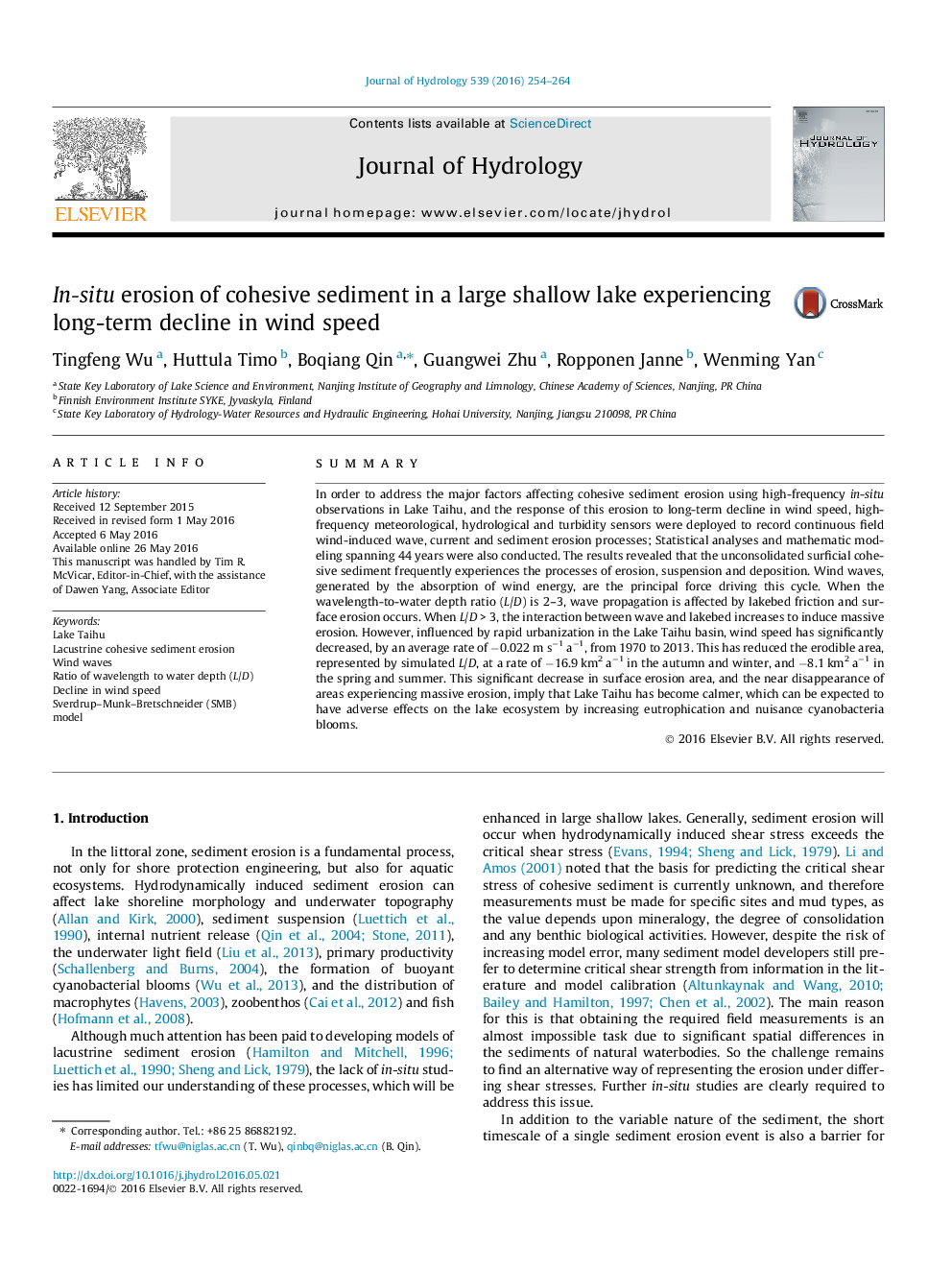| Article ID | Journal | Published Year | Pages | File Type |
|---|---|---|---|---|
| 6409923 | Journal of Hydrology | 2016 | 11 Pages |
â¢High-frequency in-situ observations of cohesive sediment erosion in Lake Taihu.â¢Wind waves determined cohesive sediment erosion.â¢Ratio of wavelength to depth effectively represents lacustrine sediment erosion.â¢Simulated erodible areas of the lake have been decreasing with wind since 1970.â¢Erosion decline caused by rapid urbanization adversely affect lake ecosystem.
SummaryIn order to address the major factors affecting cohesive sediment erosion using high-frequency in-situ observations in Lake Taihu, and the response of this erosion to long-term decline in wind speed, high-frequency meteorological, hydrological and turbidity sensors were deployed to record continuous field wind-induced wave, current and sediment erosion processes; Statistical analyses and mathematic modeling spanning 44 years were also conducted. The results revealed that the unconsolidated surficial cohesive sediment frequently experiences the processes of erosion, suspension and deposition. Wind waves, generated by the absorption of wind energy, are the principal force driving this cycle. When the wavelength-to-water depth ratio (L/D) is 2-3, wave propagation is affected by lakebed friction and surface erosion occurs. When L/D > 3, the interaction between wave and lakebed increases to induce massive erosion. However, influenced by rapid urbanization in the Lake Taihu basin, wind speed has significantly decreased, by an average rate of â0.022 m sâ1 aâ1, from 1970 to 2013. This has reduced the erodible area, represented by simulated L/D, at a rate of â16.9 km2 aâ1 in the autumn and winter, and â8.1 km2 aâ1 in the spring and summer. This significant decrease in surface erosion area, and the near disappearance of areas experiencing massive erosion, imply that Lake Taihu has become calmer, which can be expected to have adverse effects on the lake ecosystem by increasing eutrophication and nuisance cyanobacteria blooms.
